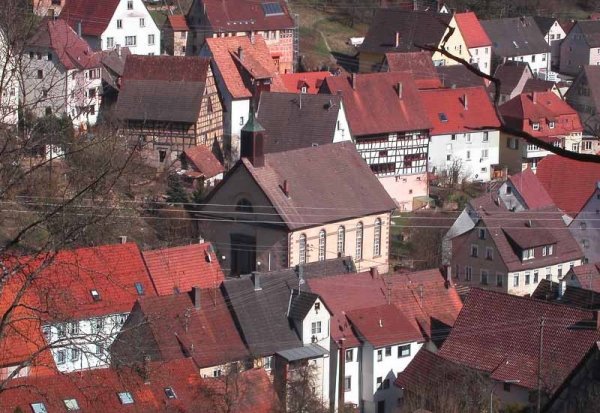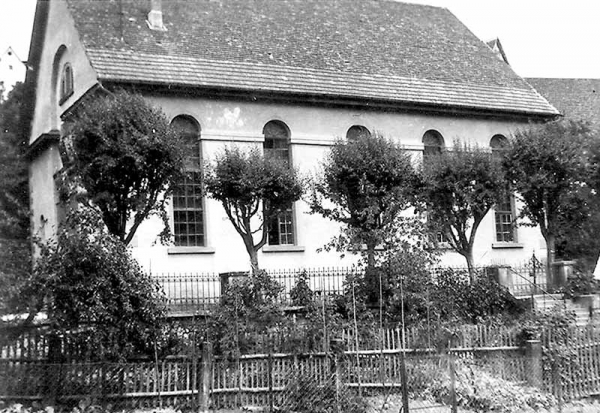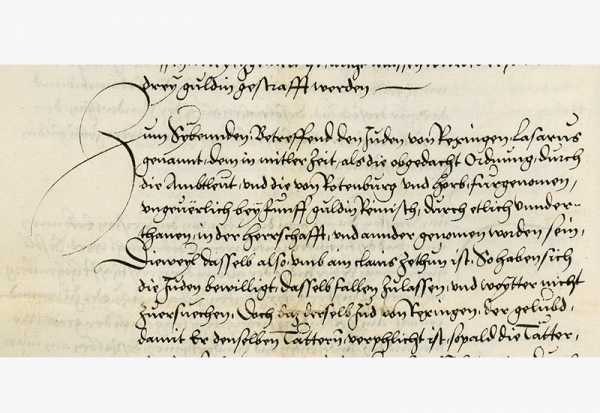In Rexingen one finds the unusual situation of the dual use of a former synagogue both as memorial site and church. In 1945, after the extinction of the Jewish community by the Nazis, there was no clear concept for the use of the ruined interior of the building. In 1952 it was handed over to the newly-formed Protestant community who altered it to suit their purposes. In 1997 citizens founded the Association of Patrons and Friends of the Former Rexingen Synagogue to ensure the maintenance and restoration of the building and to research and document the Jewish history of the village.
The imposing building in neoclassical style was not the first synagogue in the Swabian rural community. It replaced the first synagogue built in the 18th century which was too small and had become dilapidated. With great pride the “most beautiful synagogue of the rabbinate district” was inaugurated in August 1837. It served the community as their place of worship for 101 years. After the defilement in November 1939 it was variously and inappropriately used and in 1952 was consecrated as a Protestant church.
It is not known just when the Jewish community in Rexingen was founded. The first documented mention of a Jew in Rexingen is found in the Judenordnung of the County of Hohenberg of 1516. The first synagogue was built in the first half of the 18th century. In the 19th century the community increased greatly and around 1850 reached its highest percentage (36%) of the total population of 1132 inhabitants. At this time Rexingen was a purely Catholic-Jewish village.
The cemetery was laid out in 1760 on a northern slope above the village and was enlarged several times in keeping with the growth of the community. It is one of the largest Jewish cemeteries in Baden-Württemberg with room for more than 1,100 graves. The first graves were laid out in 1765, the last one in 1962.
 Deutsch
Deutsch
 English
English



